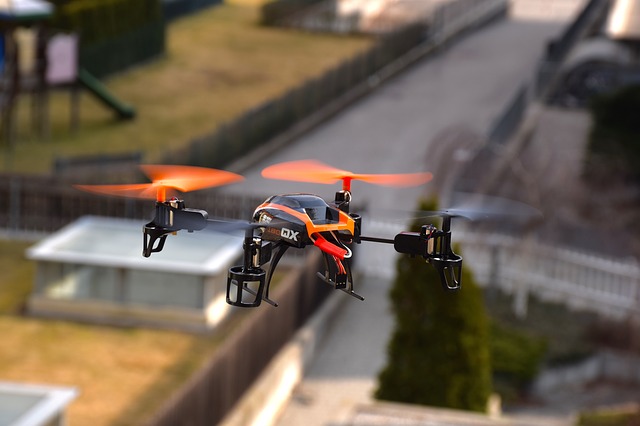Drone regulations and safety
There is a growing use of drones in construction. Their aerial use is governed by a well-established regulatory framework devised for the commercial use of unmanned aircraft. There are also the health and safety concerns for individuals working in the vicinity of the flight area.
As the technology and its uses continue to evolve, it will be wise to keep an eye on further legislation in regard to drone use.
This article provides a guide to regulations and good practice under current law in respect of commercial operation:
- The operator must hold a permit (PfCO) issued by the Civil Aviation Authority.
- The drone with equipment attached must be registered in the correct weight and sensor category:
- 0-7 kg (small unmanned aircraft - SUA).
- 7-20 kg (larger drone).
- 20 kgs and over.
- SUAs (majority used in construction) may be operated in congested areas providing they are not brought within 50 m of any person, structure or vehicle outside the control of the drone’s operational management. This is reduced to 30 m during take off and landing.
- Larger drones are prohibited to fly within 150 m of a city, town or area substantially populated through commercial or residential use.
- The standard PfCO stipulates a maximum 500 m distance line of sight at all times by operator visibility to the naked eye (VLOS).
- Maximum height of a SUA must not exceed 122 m above the level of take-off.
- The commercial operator must carry insurance in compliance with EC Regulation 785/2004.
With regard to health and safety, management employing the commercial use of a drone should:
- Check the licenses, qualifications, competence and experience of the operator.
- Prepare a clear brief in regard to the data required.
- Consider any neighbour objections in regard to privacy.
- Provide an induction session for the operator and its team.
- Approve the flight plans, risk assessment and timetables with special attention to hazards and aerial obstructions such as crane movements, aerial masts and cables.
- Check insurances are in order.
- Inform all personnel affected by the planned flights of the flight plans to protect their safety. This might include external parties such as emergency services that use helicopters.
- Agree an emergency procedure in the event of drone or controls mechanical failure.
- Agree copyright ownership and privacy terms on data acquired by the drone prior to instruction.
- Obtain signed confirmation by the operator prior to flight that the conditions and circumstances are safe.
[edit] Related articles on Designing Buildings
- Construction drones.
- Construction Site Security guide.
- Drones as a Service DaaS.
- Health and safety.
- How can drones transform construction processes?
- Mitie - drone pest control inspection.
- Paint by drone.
- Post processed kinematic PPK.
- Risk assessment for construction.
- Risk management.
- Safety audit.
- Uses of drones in construction.
- Using drones for inspection and survey.
Featured articles and news
RTPI leader to become new CIOB Chief Executive Officer
Dr Victoria Hills MRTPI, FICE to take over after Caroline Gumble’s departure.
Social and affordable housing, a long term plan for delivery
The “Delivering a Decade of Renewal for Social and Affordable Housing” strategy sets out future path.
A change to adoptive architecture
Effects of global weather warming on architectural detailing, material choice and human interaction.
The proposed publicly owned and backed subsidiary of Homes England, to facilitate new homes.
How big is the problem and what can we do to mitigate the effects?
Overheating guidance and tools for building designers
A number of cool guides to help with the heat.
The UK's Modern Industrial Strategy: A 10 year plan
Previous consultation criticism, current key elements and general support with some persisting reservations.
Building Safety Regulator reforms
New roles, new staff and a new fast track service pave the way for a single construction regulator.
Architectural Technologist CPDs and Communications
CIAT CPD… and how you can do it!
Cooling centres and cool spaces
Managing extreme heat in cities by directing the public to places for heat stress relief and water sources.
Winter gardens: A brief history and warm variations
Extending the season with glass in different forms and terms.
Restoring Great Yarmouth's Winter Gardens
Transforming one of the least sustainable constructions imaginable.
Construction Skills Mission Board launch sector drive
Newly formed government and industry collaboration set strategy for recruiting an additional 100,000 construction workers a year.
New Architects Code comes into effect in September 2025
ARB Architects Code of Conduct and Practice available with ongoing consultation regarding guidance.
Welsh Skills Body (Medr) launches ambitious plan
The new skills body brings together funding and regulation of tertiary education and research for the devolved nation.
Paul Gandy FCIOB announced as next CIOB President
Former Tilbury Douglas CEO takes helm.
UK Infrastructure: A 10 Year Strategy. In brief with reactions
With the National Infrastructure and Service Transformation Authority (NISTA).























